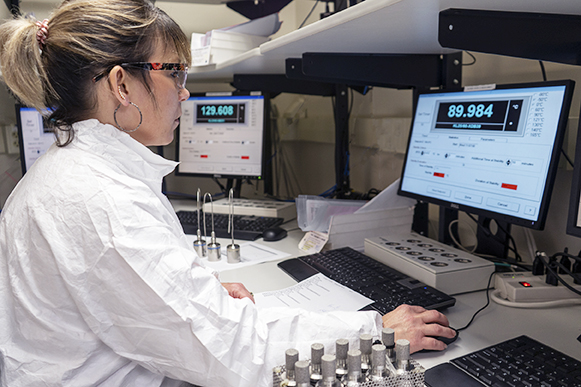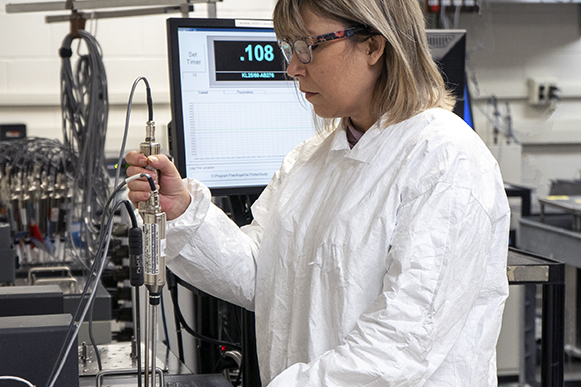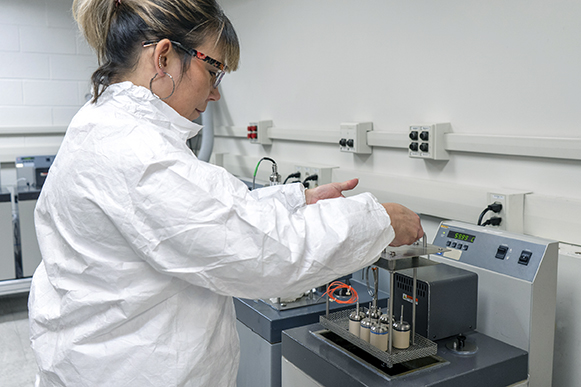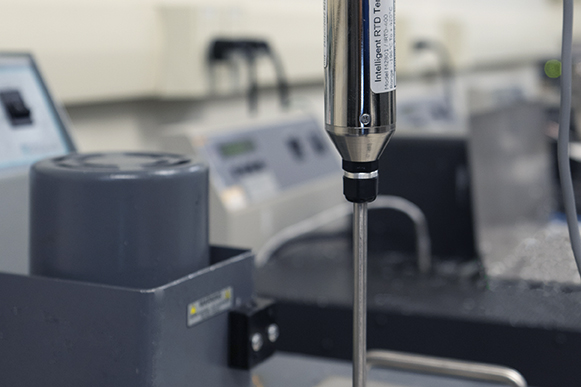As a validation professional or quality assurance expert, it is your responsibility to ensure that your pharmaceutical or biotech equipment is in compliance with the regulatory standards. You have a responsibility to understand how your equipment is performing to guarantee that your qualification studies are within compliance of governing bodies.
And if you don’t know your equipment’s accuracy, you’re risking non-compliance and a potential error in your measurements and studies.
At Kaye we recommend having your equipment calibrated annually in one of our three ISO 17025 accredited calibration laboratories. Doing so will help you protect your assets and also lower the risk in your metrology lab.
WHAT IS EQUIPMENT CALIBRATION?
Equipment calibration is the process of finding out the deviation of a device compared to a reference standard and correcting the sensors inside measurement equipment to get them back to the most accurate reading.
Reliable and unvarying measurement standard Instruments that should be calibrated include IRTDs, Validator AVS, ValProbe loggers, RF ValProbes, calibration references like drywells, and Validator 2000s, and more.
Regulatory bodies like the FDA and others define the calibration requirements for equipment and state that they have to be accurate within a certain threshold. This threshold becomes extremely strict when working in pharmaceutical or biotech settings, which is where Kaye comes in.

WHY IS A CALIBRATION NECESSARY?
As time goes on and you use your thermal validation equipment more, there will be a greater chance of “drift.” That is, how far away the sensors drift from giving an accurate reading. Drift naturally occurs when sensors are repeatedly used in extreme or harsh temperatures.
For instance, let’s say you’re using a rigid ValProbe RT logger in a harsh environment, like 140°C. And you use that logger over and over for months. Well the RTD sensor inside the logger that’s recording the temperature can start to become less accurate. This normally happens in small increments and over periods of time. So after the first few months it may have only drifted a fraction of a degree. But sensors left uncalibrated for long periods of time can continue to drift further away and eventually be off by enough to make your sensor non-compliant.
This poses a huge risk to your qualification studies because now there’s no way to know if the ValProbe is reading the actual temperature inside the asset. Moreover, the longer you wait to calibrate your sensors, the more studies you’re putting at risk.

THE SOLUTION
To ensure that your equipment is functioning the way it’s supposed to, you should have the sensors calibrated in an accredited laboratory. This calibration will readjust the sensors so that they give a precise and accurate reading.
So back to our example of the rigid ValProbe RT.
You would send the ValProbe to our laboratory and we’d perform an “As Found,” which is a test that shows what the sensors were reading when they entered our lab. We test the ValProbe against a Kaye reference standard, which is a very stable and highly accurate reference standard.
Then we would re-calibrate the sensors so that they would read exactly what the reference standard says they should be reading. We document the results and return them to you – that process is called an “as left.”


REDUCING YOUR RISK
As you can see, the longer you wait to get your sensors calibrated, the more at risk you are of your studies being inaccurate. That’s why we recommend scheduling an annual calibration of all your validation equipment. This helps protect your assets and lowers the risk of you becoming non-compliant.
We also understand that sometimes you’re so busy that you can’t afford to go a few days without your equipment for fear of getting behind. Kaye’s solution for that lies is our vast rental fleet. We have most of our products available in rental – so you don’t have to worry about stopping production while your equipment is calibrating in our factory. We offer customizable rental agreements that are built to fit the schedules of our customers.
If you’d like to talk to a Kaye representative about getting your equipment calibrated, reach out to us today and we’d be happy to assist you.



